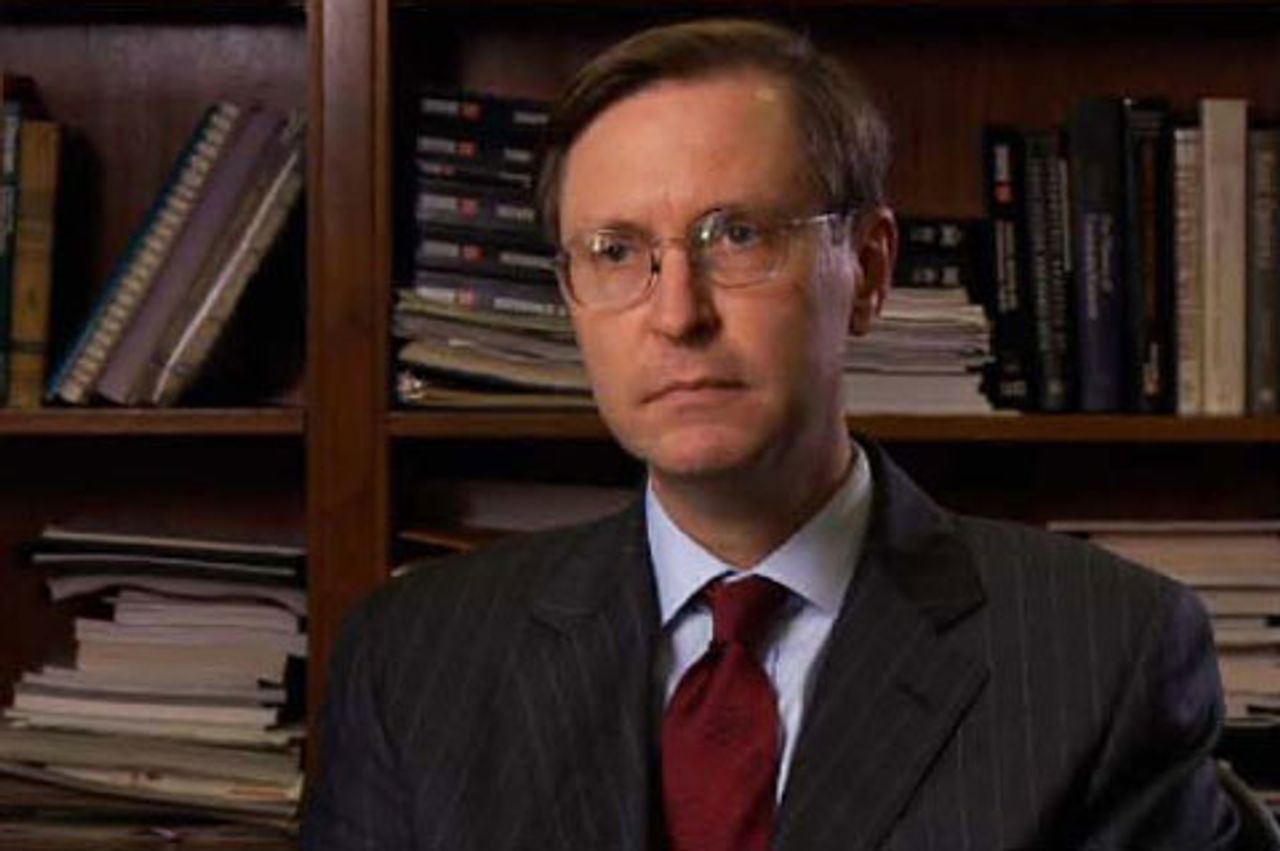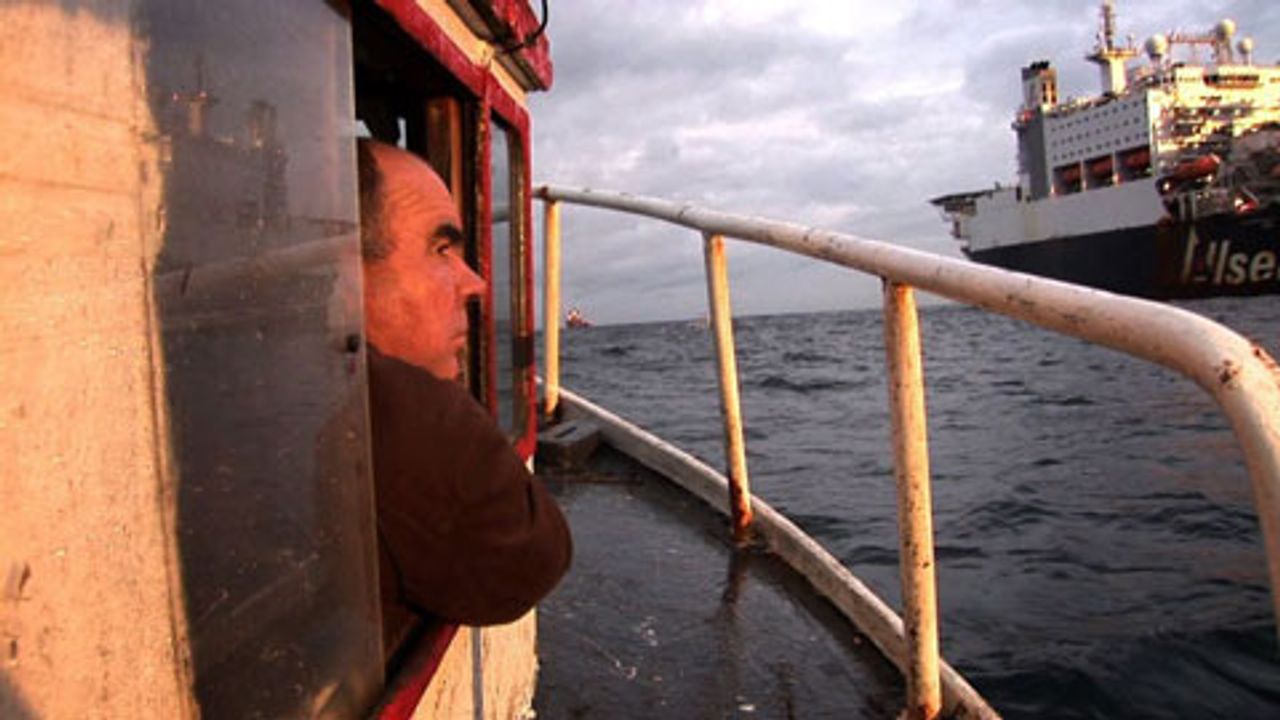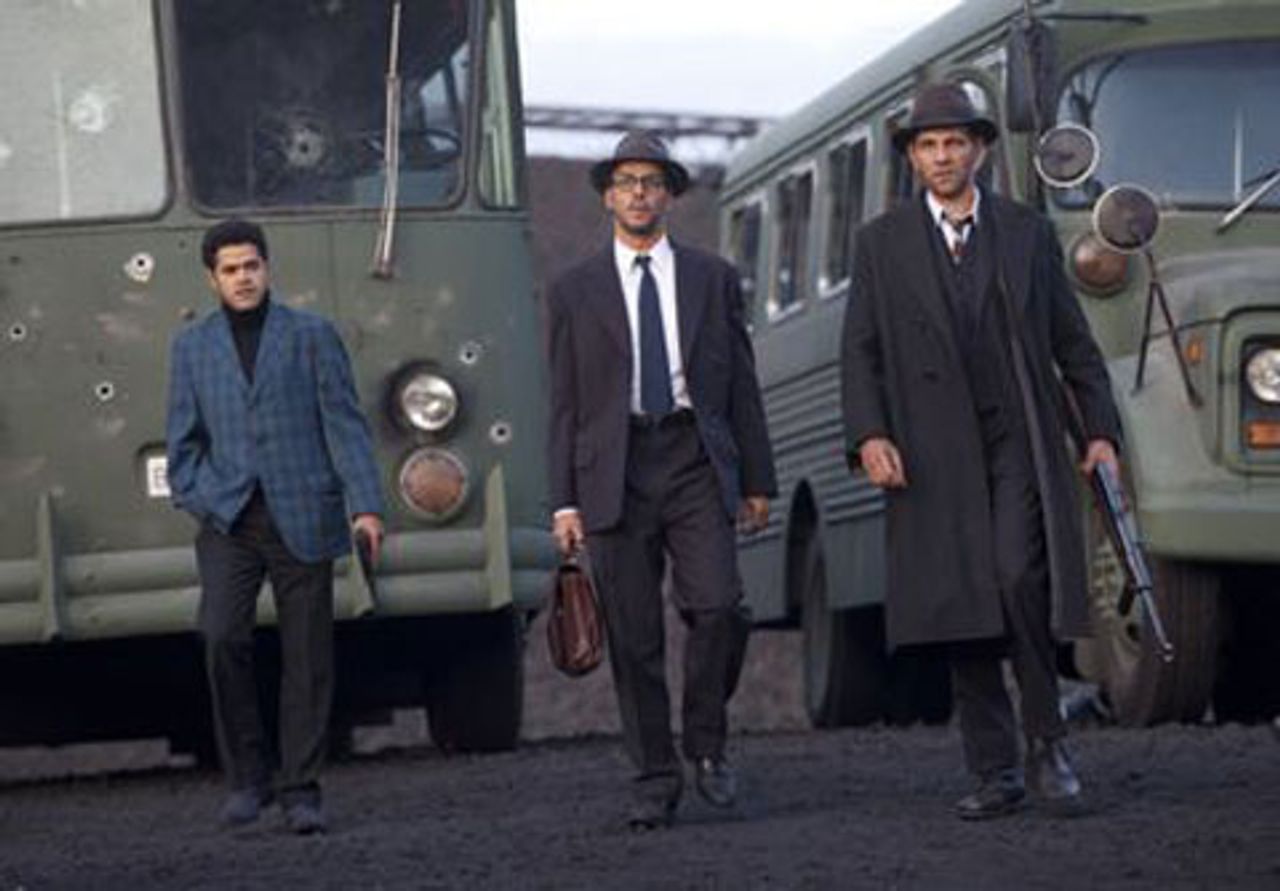This is the sixth of a series of articles devoted to the recent Toronto film festival (September 9-19). Part 1 was published on September 23, Part 2 on September 28, Part 3 on October 1, Part 4 on October 6, and Part 5 on October 14.
To look firmly at the world “with simple, wise and serious eyes,” as a Marxist critic once put it, is not a simple or easy matter. It takes knowledge and courage, both of which may be rare qualities in a difficult cultural and political climate. But times change.
Many of today’s artists draw near or even circle the problems that concern them, without treating the latter head-on. They often avoid the more troubling aspects, aspects that would challenge their own views and perhaps social position or require a more profound understanding of society and history. In any event, the result is a reluctance or an inability to portray the world more seriously and fully.
A number of documentaries at the Toronto film festival presented, with differing degrees of depth, various interesting facts about the modern world. In some cases, the facts were devastating and horrific—in others, genuinely revelatory. And in some of the films, unpleasant lies were repackaged to cover up their malignant nature.
But the common denominator remains an avoidance of certain basic truths, above all, the failure of capitalism as a system. Without being impatient, it doesn’t seem to be demanding too much, in face of the enormous levels of suffering and hardship experienced by a great portion of the world’s population, to suggest that it is high time filmmakers drew some generalized conclusions.
Half-baked notions, half-truths and timidity make for unsatisfying works. Taking the path of least resistance is less and less excusable.
 Glenn Hubbard interviewed in Inside job
Glenn Hubbard interviewed in Inside jobInside Job by American documentarian Charles Ferguson (No End In Sight) is a valuable, detailed account of the global financial meltdown in September 2008. Estimating the cost at over $20 trillion, with millions of people pauperized globally, the filmmaker asserted at the movie's question-and-answer session in Toronto that the “American people will be paying for this for a long time to come.” He further argued that another crash of similar dimensions was looming on the horizon.
Narrated by Matt Damon, the documentary employs archival footage, graphs and charts, as well as dozens of talking heads—mostly bourgeois economists, who range from supportive to hostile to the exposé. It argues that the Obama White House bears as much responsibility as the previous Bush administration for an increasingly criminal financial sector.
According to Inside Job’s production notes, progressive deregulation since the 1980s led to crises that augmented in severity. But due to the financial industry’s swelling power and wealth, a decreasing number of people have been held accountable. In the case of the 2008 crisis, “nobody has gone to prison, despite fraud that caused trillions of dollars in losses.”
A mass of material about the entrenched, socially-destructive operations of the financial elite and their Democratic and Republican agents does not deter Ferguson from drawing the false conclusion that the financial collapse “was a completely avoidable crisis,” if only there had there been more regulation and a better caliber of people at the helm. “We can all agree,” says Ferguson, “on the importance of restoring honesty and stability to our financial system, and of holding accountable those who destroyed it.”
This is to avert one’s eyes from the objective, historic and systemic character of the collapse. Commentators such as this never ask themselves how and why these astonishing changes took place. Did the US ruling elite suddenly lose its marbles? Why did the caliber of people decline so? Might it not have had something to do with the narrowing options left open to a crisis-ridden system?
The film's strongest feature is the exposure and indictment of academia for its corruption and servitude to corporate America. Most notable in the pack is Glenn Hubbard, the current dean of Columbia University's business school. As the chief economic advisor to the Bush administration, he was instrumental in the design of the 2003 tax cuts for the rich. He is on the board of Met Life, was previously on the board of Capmark, and, according to the production notes, is a staunch advocate of the deregulation of financial services.
From Ireland, a struggle against an oil giant
Irish filmmaker Risteard Ó Domhnaill’s documentary, The Pipe, chronicles the struggle of local people to prevent the oil giant Royal Dutch Shell from laying a pipeline in Ireland’s county Mayo. When 11 trillion cubic feet of natural gas 80 kilometers off the coast of Ireland were discovered, a consortium led by Shell was given drilling rights for a song by the Irish government.
 The Pipe
The PipeThe filming began in 2005. At that time, Rossport—a small farming and fishing village—came to national prominence when five men were jailed for refusing to allow the oil company access to their lands. Shell proposed to lay a high-pressure, raw gas pipeline straight through the village.
The Irish government’s determination to see the pipeline built led to many confrontations between the locals and the Garda, the Irish police force, which essentially functioned as Shell’s shock troops, even though several members of the force came from the community. One veteran crab fisherman, Pat O’Donnell, was arrested several times for refusing to obey an injunction against working in his traditional waters. (“There is no job in the world that would replace it.”)
O’Donnell and his boat are shown defying the world’s largest pipe-laying vessel, the Solitarire. The Pipe captures the dazzling beauty of the region and the deep-going, historical connection the local population feels to it. Unfortunately, Ó Domhnaill has chosen to downplay the political dimensions of the fight, despite the fact that the full force of the state, on behalf of a transnational, was mobilized against the protesters.
Danish soldiers in Afghanistan
The creators of the Danish documentary, Armadillo, about the Afghan war, lacked the moral or political fortitude required to make a film critical of imperialism. They did something else instead. Director Janus Metz followed a Danish military platoon in Afghanistan beginning in January 2009. The filmmakers shot for over three months, split over four tours of duty. Armadillo is the name of the forward operating base in Helmand province, manned by 170 Danish and British soldiers.
As was the case with the US documentary, Restrepo, the filmmakers were embedded and recorded the soldiers’ brutal attacks on the Afghan population. The films thereby provide a glimpse into the disorientation and demoralization of soldiers, mostly very young, fighting a filthy colonial war. Neither Armadillo nor Restrepo, however, is anti-war.
Footage in Armadillo of a skirmish shocked the Danish people when it was broadcast. The battle ends with the Danes throwing a grenade into a ditch occupied by several insurgents. The Danish soldiers then move in and fire multiple rounds into the bodies of the fallen Afghans and gloat over their “victory.” One later says that they had “liquidated wounded people and piled up the dead to take pictures of ourselves as heroes.”
Danish government officials and senior members of the military have commissioned an inquiry into the event. In an interview during which he expressed support for the soldiers, Metz stated: “When you manage to defeat your enemy, there is great relief and great exhilaration. Maybe we’re looking at something that goes to the core of something very human. The soldiers are so close to death and they actually kill someone. The way they handle the bodies afterwards maybe testifies to something at the very core of humanity—of our grubby human nature. War has always been there. It has always been part of us.”
Metz did succeed in showing the “heart of darkness.” But he never addresses the character of the war, nor who is responsible for creating these youthful killing machines, who are themselves victims. It is not our “grubby human nature” that is the problem, but worse than grubby neo-colonialism—presented to the public as “peace-keeping”—and its apologists.
Historical and political fiction films
In 1968, the Ford Dagenham factory in Essex, England, employed some 55,000 workers. Of these, 187 were women who sewed car seats in the most dilapidated part of the plant. Working long hours for low pay in extremely exploitative conditions, the women began industrial action when they were reclassified as “unskilled,” despite performing the same work as men placed in the semi-skilled grade. In addition, the rate of pay was 85 percent of the male rate. Confronted by Ford's refusal to upgrade them, they walked out and stayed out for three weeks. They were joined by the 195 women at Ford's Halewood plant in Merseyside.
British director Nigel Cole’s Made In Dagenham is a dramatization of the struggle. With Sally Hawkins as Rita O’Grady, the strike’s fearless and principled leader, Cole shows women with no previous experience in collective struggle combating the auto giant. This, while trying to handle the immense pressures building up in their domestic lives. Bob Hoskins plays a sympathetic union rep who mentors Rita throughout the ordeal.
Taking on a hostile union leadership that is colluding with Ford’s Detroit management—and with the backing of the men in the plant to whom Rita makes a direct appeal—the women’s strike brings Ford’s entire car production to a standstill.
The impact of the action forces Barbara Castle (Miranda Richardson), employment secretary in Harold Wilson's Labour government, to intervene. In the end, the Ford women win 92 percent of the men's rate. Their battle is instrumental in bringing about the Equal Pay Act of 1970.
Cole’s movie is an attractive package with a populist veneer. Intercut with documentary footage of the factory, the strike and its resolution, the movie has charm and many elements of the director’s light character comedies such as Calendar Girls (2003) and Saving Grace (2000).
But Cole distorts history, bending his film in a feminist direction. The Dagenham women are portrayed not merely as adversaries of Ford and the trade union bureaucracy. They are also burdened with somewhat silly and ineffectual—and worse—men, in their personal lives—although Hawkins brings feeling and complexity into her portrayal of the wife of a fellow Ford worker.
In general, Cole wants his gutsy women to be pulverizing the retrograde world of men. Even Labour Party hack Barbara Castle, wonderfully played as a human machete by Richardson, is rendered as an intrepid feminist heroine running roughshod over Ford honchos—and making her prime minister boss (Wilson) look like a dodo. One would never know that in 1968, Castle attempted to introduce the Labour government’s anti-working class prices and incomes policy. And a year later, her infamous white paper, “In place of Strife,” attacked the right to strike.
Three Algerian brothers
Outside the Law (Hors la loi) from French-Algerian filmmaker Rachid Bouchareb (Indigénes) is a taut, epic story of three brothers whose lives unfold during the struggle for Algerian independence from France.
 Outside the Law
Outside the LawA prologue set in 1925 shows the family being forced off their land by a French colonist. The movie jumps to the 1945 Sétif massacre in Algeria, in which French occupation soldiers gun down hundreds of Algerians—one day after the formal end of World War II. It is a traumatic event that scatters the brothers. Eventually, they are reunited with their mother in the Parisian slums where Algerians are packed in—and revolutionary sentiments smolder.
The brothers’ paths have diverged. One is an intellectual (Sami Bouajila), another a scarred soldier (Roschdy Zem) returning from fighting in the French army in Indochina, and the third (Jamel Debbouze), a hustler. In response to the repression of their countrymen, the first two become leaders of the FLN (National Liberation Front), setting out to defeat the more conservative wing of the resistance. The third puts his energies into training the first Algerian boxer to represent France—against his brothers’ wishes.
Skillfully, Bouchareb shows the crisscrossing of the brothers’ fates in a strife-torn Paris.
Suffering in Kashmir
The recent period has seen mass protests shake the Indian-held state of Jammu and Kashmir. India’s Autumn (Harud) by debut filmmaker Aamir Bashir, a native of the territory, is an unsettling, sensitive movie that exposes the terrible emotional price the population continues to pay for the 1947 partition of the Indian subcontinent.
Rafiq (Shahnawaz Bhat) is a young man who is foiled in his attempt to cross into Pakistan to train as an independence fighter. He dejectedly returns home to a life of extreme poverty under the jack-boot of the Indian army. Besides being subjected to a constant military presence, Kashmiri males are routinely forced to show up for humiliating “identification parades.”
Like his distraught parents, Rafiq is haunted by his brother’s disappearance, whom he suspects has been kidnapped and killed by the security forces. The family lives under a dark cloud that leads to the father’s mental collapse—with horrific consequences.
John Sayles’ latest film
American director John Sayles’ latest movie Amigo is set during the 1900 US invasion of the Philippines. Clearly meant to evoke the wars in Iraq and Afghanistan, Amigo’s fable-like story unfolds in the remote village of San Isidro. An unpretentious and modest film, it features the fair-minded American Lt. Compton (Garret Dillahunt) and his not so fair-minded superior Col. Hardacre (the wonderful Chris Cooper).
The Philippine Revolution against Spain began in April 1896. The country declared itself an independent republic in 1898, until the end of the Spanish-American War saw the transfer of control of the Philippines to the US. In 1899, the Philippine government declared war on the US and a bloody conflict ensued that claimed the lives of more than one million Filipinos.
When US troops take over San Isidro, most of its young men have joined the rebels operating out of the dense forest. Padre Hidalgo (Yul Vazquez), a Spaniard, tries to make common cause with the Americans against the village chief Rafael (Joel Torre), whose brother is an insurgent leader and whose son has run off to join them. Despite offering himself as an “amigo” to the Americans, Rafael is neither accepted by them nor trusted by the rebels.
While Sayles portrays the rank-and-file American soldiers in a cartoonish manner, his attitude towards the insurgents seems ambivalent to say the least. The compromising Rafael is the most rounded of his characters.
The South African film Life, Above All—directed by Oliver Schmitz and based on the Allan Stratton novel, Chanda’s Secrets—is a sincere effort to deal with the prejudices of the population concerning the AIDS epidemic. It centers on 12-year-old Chanda living in an impoverished South African township, who takes responsibility for holding her family together as her mother succumbs to a disease that tragically unleashes a terrible social wrath against its victims.
Kelly Reichardt’s period piece, Meek’s Cutoff, starring Michelle Williams and Bruce Greenwood, is about an ill-fated wagon train in the Pacific Northwest in 1845. The film has no definable start or finish, and while Reichardt brings to it her characteristically undramatic and minimalist approach, Meek’s Cutoff lacks the concrete social detail that made her Wendy and Lucy (also with Williams) something of a wrenching work.
To be continued
